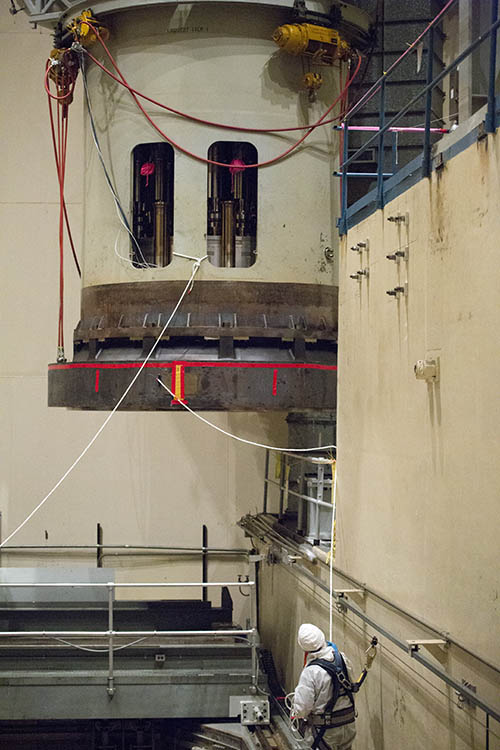Video: Fort Calhoun defueling outage complete

OPPD officials notified the Nuclear Regulatory Commission on Monday, Nov. 14, 2016, that the Fort Calhoun Station (FCS) defueling outage was complete.
The defueling outage ended on Thursday, Nov. 10, 17 days after it began. The work began when the reactor vessel head was removed and placed on the head stand (shown below) within the FCS containment building.

The defueling outage, which started Oct. 24, is going well, said Craig Longua, outage manager at FCS.
“Everyone has stayed focused on safety and strong human performance. We are working safely and efficiently,” he said. “We’ve had no injuries, and we are doing better than our outage dose goal for radiation exposure.”
fuel offload
From Oct. 29 through early Monday, Nov. 7, employees successfully offloaded the nuclear fuel from the reactor core. The following photos show the process as it occurred.





Overnight Nov. 8 into the morning of Nov. 9, employees lifted the reactor vessel head and installed it atop the reactor cavity. That is where the vessel head will be bolted into place.
final task
On Nov. 10, workers at FCS installed six studs into the plant’s reactor vessel head. This completed the physical work for the defueling outage. The Outage Control Center was secured at 2:46 p.m. that day, officially marking the end of the outage.
The process was completed safely and efficiently with zero injuries or safety issues.
With all of the nuclear fuel assemblies now safely moved from the reactor to the spent-fuel pool, Fort Calhoun Station is ready to transition from an operating state to decommissioning. Below are some highlights from the events of Nov. 10.
photos from the work







Terry Zank is a contributor to The Wire and senior digital channel specialist at OPPD, where he has worked for 30 years. He and his wife have three sons. Terry enjoys bike riding, playing racquetball, hiking, watching college football, watching great movies from years’ past, and citing quotes from those movies, much to his family’s chagrin.
View all posts by Terry Zank >







